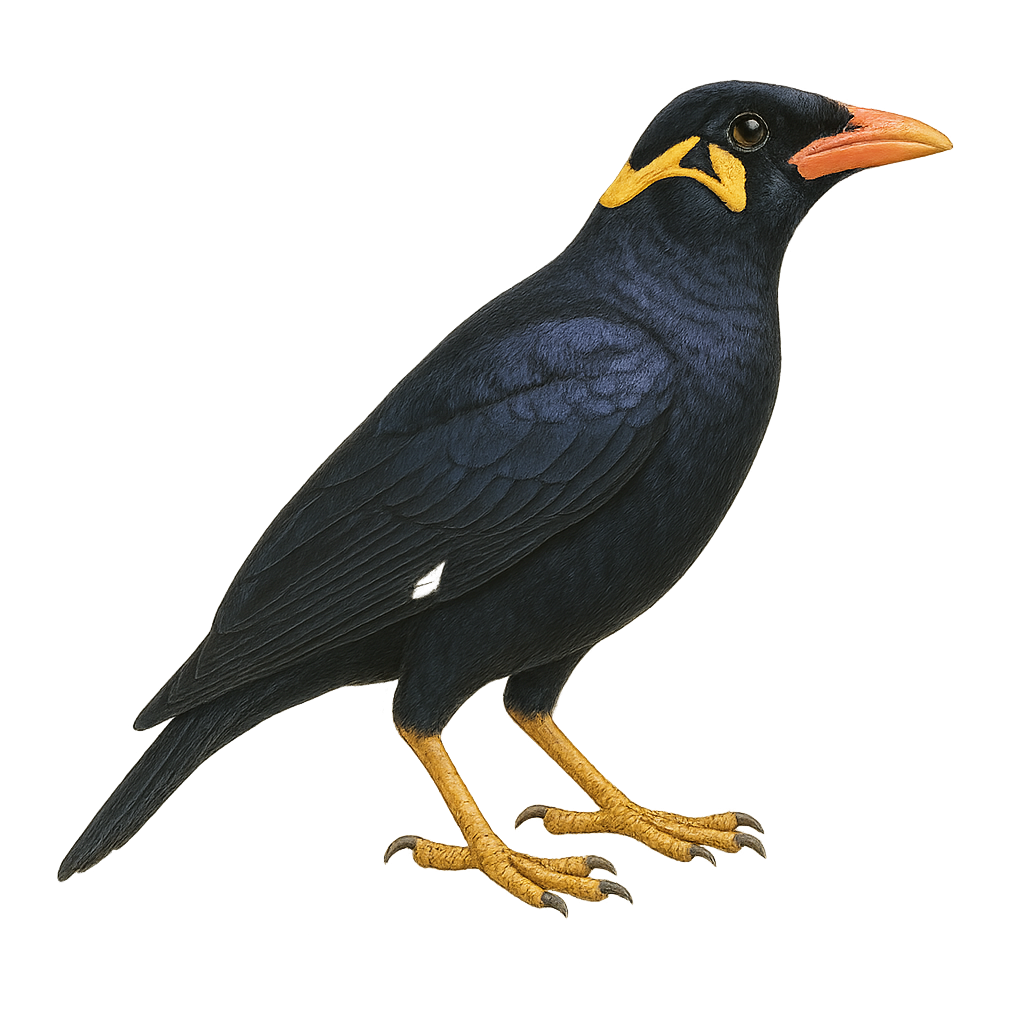Your wildlife photography guide.
Explore the common hill myna in detail, study its behavior, prepare your shots.
Where to observe and photograph the common hill myna in the wild
Learn where and when to spot the common hill myna in the wild, how to identify the species based on distinctive features, and what natural environments it inhabits. The WildlifePhotographer app offers tailored photography tips that reflect the common hill myna’s behavior, helping you capture better wildlife images. Explore the full species profile for key information including description, habitat, active periods, and approach techniques.
Common Hill Myna
Scientific name: Gracula religiosa

IUCN Status: Least Concern
Family: STURNIDAE
Group: Birds
Sensitivity to human approach: Suspicious
Minimum approach distance: 10 m
Courtship display: March to May
Incubation: 14-17 jours
Hatchings: March to June
Habitat:
Tropical forests, mangroves, plantations
Activity period :
Primarily active during the day, with peak activity in the morning and late afternoon.
Identification and description:
The Common Hill Myna, Gracula religiosa, is a remarkable bird known for its ability to mimic sounds and human speech. Native to the tropical forests of Southeast Asia, it is easily recognizable by its glossy black plumage, white wing patches, and bright yellow wattles behind the eyes. This sociable bird lives in groups and primarily feeds on fruits, nectar, and insects. It is often seen in humid forests, mangroves, and plantations. Although popular as a pet due to its vocal talents, preserving its natural habitat is crucial for its long-term survival.
Recommended lens:
400 mm – adjust based on distance, desired framing (portrait or habitat), and approach conditions.
Photography tips:
To photograph the Common Hill Myna, it is advisable to use a 400mm lens or longer to capture precise details without disturbing the bird. Look for it in tropical forests or mangroves where it is active during the day. Be patient and discreet, as it can be suspicious of humans despite being sociable. Use natural light to highlight the vibrant colors of its plumage and try to capture moments when it vocalizes, as this adds a dynamic dimension to your photos.
The WildlifePhotographer App is coming soon!
Be the first to explore the best nature spots, track rutting seasons, log your observations, and observe more wildlife.
Already 1 449 wildlife lovers subscribed worldwide

